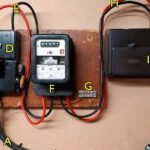Two major players in green energy have teamed up to boost hydrogen production in the North Sea. On September 4, 2025, German-led AquaVentus and Scotland’s Hydrogen Scotland signed a key agreement to push forward clean hydrogen tech and transport, aiming to cut carbon emissions across Europe.
This partnership comes at a time when Europe races to meet net-zero goals by 2050. With offshore wind power growing fast, the deal focuses on turning that energy into green hydrogen, a clean fuel that could power industries and homes without fossil fuels.
Why This Partnership Matters Now
Europe faces big challenges in energy security after recent global events, like supply disruptions from conflicts and rising gas prices. The North Sea, with its strong winds, holds huge potential for renewable power. This new collaboration taps into that to create a steady supply of green hydrogen, which burns clean and produces only water as waste.
Experts say green hydrogen could replace natural gas in heavy industries like steel and chemicals. By linking Scotland’s wind resources with German tech know-how, the partnership aims to build a cross-border system that benefits both nations. Recent reports show Europe needs to triple its hydrogen production by 2030 to hit climate targets.
Scotland already leads in offshore wind, with projects like the Seagreen farm generating power for millions of homes. Germany, as a top industrial nation, imports much of its energy. This deal bridges that gap, fostering jobs and innovation in a market projected to reach $650 billion globally by 2030.
The timing aligns with broader trends. Just last month, the European Union approved funding for hydrogen pipelines, signaling strong support for such initiatives.

Details of the Agreement
The memorandum of understanding covers the full hydrogen process, from making it offshore to moving and storing it. Both groups plan to speed up research and push for policies that support a European hydrogen market.
Key leaders shared their views on the deal. Nigel Holmes, head of Hydrogen Scotland, highlighted Scotland’s edge in wind power and the chance to export green hydrogen. Jörg Singer, chair of AquaVentus, stressed the need for reliable supplies to fuel Germany’s factories.
This builds on AquaVentus’s goal to install 10 gigawatts of offshore wind capacity by 2035. That could produce one million tons of green hydrogen each year, enough to power about 10 million homes or cut emissions equal to taking millions of cars off roads.
Hydrogen Scotland brings over 200 members, including companies, schools, and local governments, all focused on low-carbon tech.
The partnership also eyes shared infrastructure, like pipelines linking wind farms to mainland grids. This could lower costs and make hydrogen more affordable than current options.
How Offshore Wind Powers Green Hydrogen
Offshore wind farms capture strong sea winds to generate electricity. That power runs electrolyzers, machines that split water into hydrogen and oxygen using renewable energy.
In the North Sea, conditions are ideal: steady winds and space for large turbines. Projects here could supply hydrogen to countries like the UK, Germany, and beyond.
Here’s a quick look at the benefits:
- Clean Energy Source: No carbon emissions during production.
- Job Creation: Thousands of roles in building and running facilities.
- Energy Independence: Reduces reliance on imported fuels.
- Scalability: Easy to expand with more turbines.
Recent advances include floating wind tech, which works in deeper waters. Scotland’s recent auctions for such projects show growing investment.
One challenge is transport. Pipelines must handle hydrogen safely, but new materials and designs are solving that.
Broader Impact on Europe’s Energy Shift
This deal fits into Europe’s push for green tech amid rising energy demands. The International Energy Agency notes hydrogen could meet 10 percent of global energy needs by 2050.
In Scotland, places like Peterhead are becoming hydrogen hubs, with plans for production plants. Germany aims to import 90 percent of its hydrogen, making partnerships like this vital.
Compare this to other regions:
| Region | Key Project | Capacity Goal | Timeline |
|---|---|---|---|
| North Sea (AquaVentus) | Offshore electrolysis | 10 GW | By 2035 |
| Scotland (Various) | Wind-to-hydrogen hubs | 5 GW+ | By 2030 |
| Denmark | Energy Island | 3 GW | By 2033 |
| Netherlands | Hydrogen Backbone | Pipeline network | By 2028 |
These efforts show a united front against climate change. Logical next steps include testing pilot projects to prove the tech works at scale.
Challenges and Future Outlook
Building this infrastructure won’t be easy. High costs, around $5 per kilogram for green hydrogen today, need to drop to compete with fossil fuels. Regulations must keep up, ensuring safety and fair trade.
Weather risks in the North Sea, like storms, could delay projects. Yet, with government backing, experts predict costs will fall 50 percent by 2030 through better tech and economies of scale.
Looking ahead, this partnership could inspire similar deals elsewhere, like in the Baltic Sea. It also ties into global events, such as the UN climate talks pushing for faster renewable adoption.
Success here might accelerate the shift from oil and gas, creating a model for other oceans.
What do you think about this green energy push? Share your thoughts in the comments and spread the word to keep the conversation going.


















